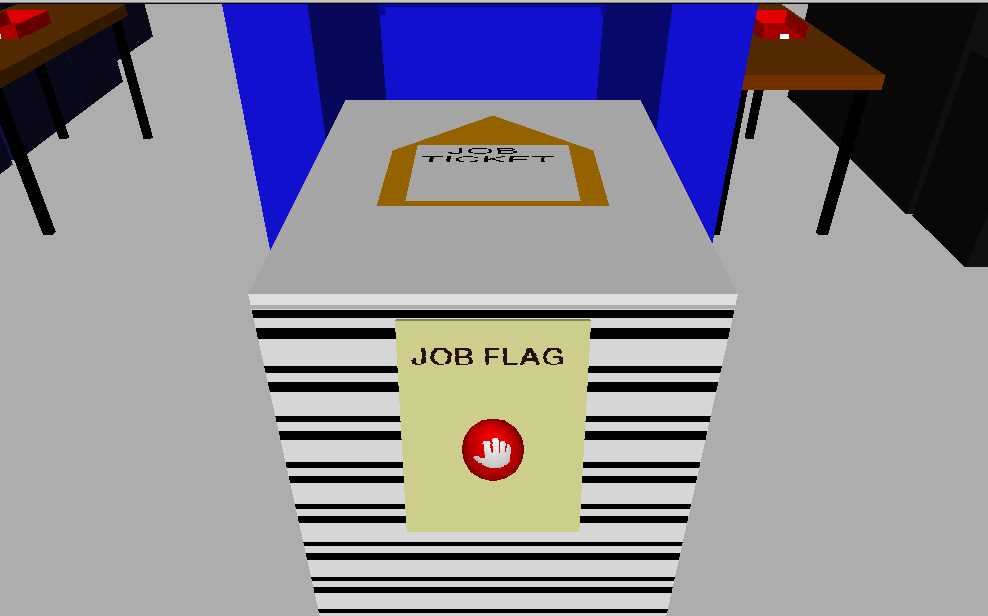
A suite of interactive virtual environments to articulate the requirements coming out of an ethnographic fieldwork study of Her Majesty’s Stationary Office (HMSO).
In 1997 I spent 3 months as an intern at Xerox Research Centre (formally EuroPARC) in Cambridge. Lancaster colleague Kev Palfreyman and I worked with sociologists in the Studies of Technologies, Organisations and Work (STOW) group, who had previously completed an ethnographic study of printing services at HMSO. Kev and I were tasked with realising in a visual form the technological requirements coming out of that fieldwork. This involved familiarising ourselves with the fieldwork material – photographs, video and interviews, in order to understand essential work processes within the organisation. We then built a suite of interactive VRML2 models to illustrate the flow of activities related to completion of print jobs within an individual print site.
HMSO were concerned to maximise the workload on expensive printing machines distributed at sites throughout the country. If a print job came in that a site didn’t have capacity for, the pre-existing solution was to ring around all the alternative sites to see if there was print capacity elsewhere. During assessment of the fieldwork materials key paper-based tools used for scheduling jobs onto specific machines were identified. We speculated that if these tools could be shared, perhaps in an electronic format across the network, then it would be possible for managers at different sites to identify capacity within the larger system, thus speeding up turnaround time for jobs and reducing machine-idle time. We modelled this in the form of a central information hub where different sites could share the load monitors for individual machines. This was mocked up and demonstrated within the model. As well as modelling a solution easy for the client to comprehend, the work carried out on the Virtual Print Factory informed aspects of the design of a subsequent commercial Xerox product called DocuShare.
Publications:
James Pycock, Kevin Palfreyman, Graham Button and Jen Allanson (1998): Representing Fieldwork and Articulating Requirements through VR. Proceedings of the ACM International Conference on Computer Supported Collaborative Work (CSCW98), Seattle, WA 1998 pp. 383-392.
James Pycock, Kevin Palfreyman, Jen Allanson, Graham Button (1998): Envisaging Collaboration: Using Virtual Environments to Articulate Requirements. Proceedings of the International Conference on Collaborative Virtual Environments (CVE98), Manchester, UK, 1998 pp. 73-79.
The Model:
The Virtual Print Factory model is no longer accessible as VRML2 isn’t supported by modern browsers. However a series of screen shots from the models, showing the production work flows, can be viewed here:

Following a Press job to Order Entry 
Following Work Bag into Scheduling 
Following the Work Bag into Origination 
Following Production Work Bag into the Press Centre 
Following Production Workbag into Stock Control 
Following the Work Baginto the Press Centre 
Following Reprographics job into Production 
Following a distributed print job
Related links:
Large Scale Document Production at XRCE Europe’s History of Innovation archive